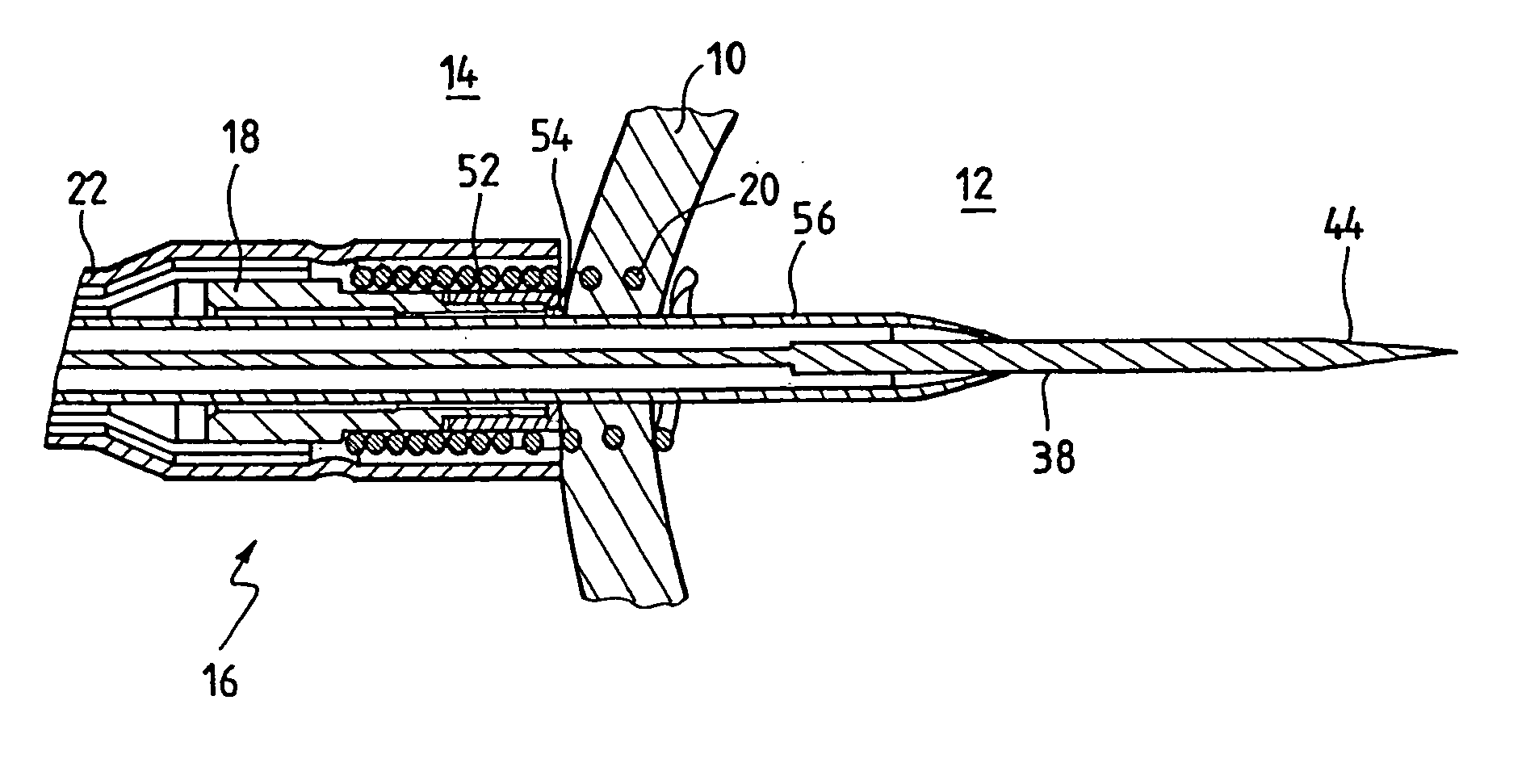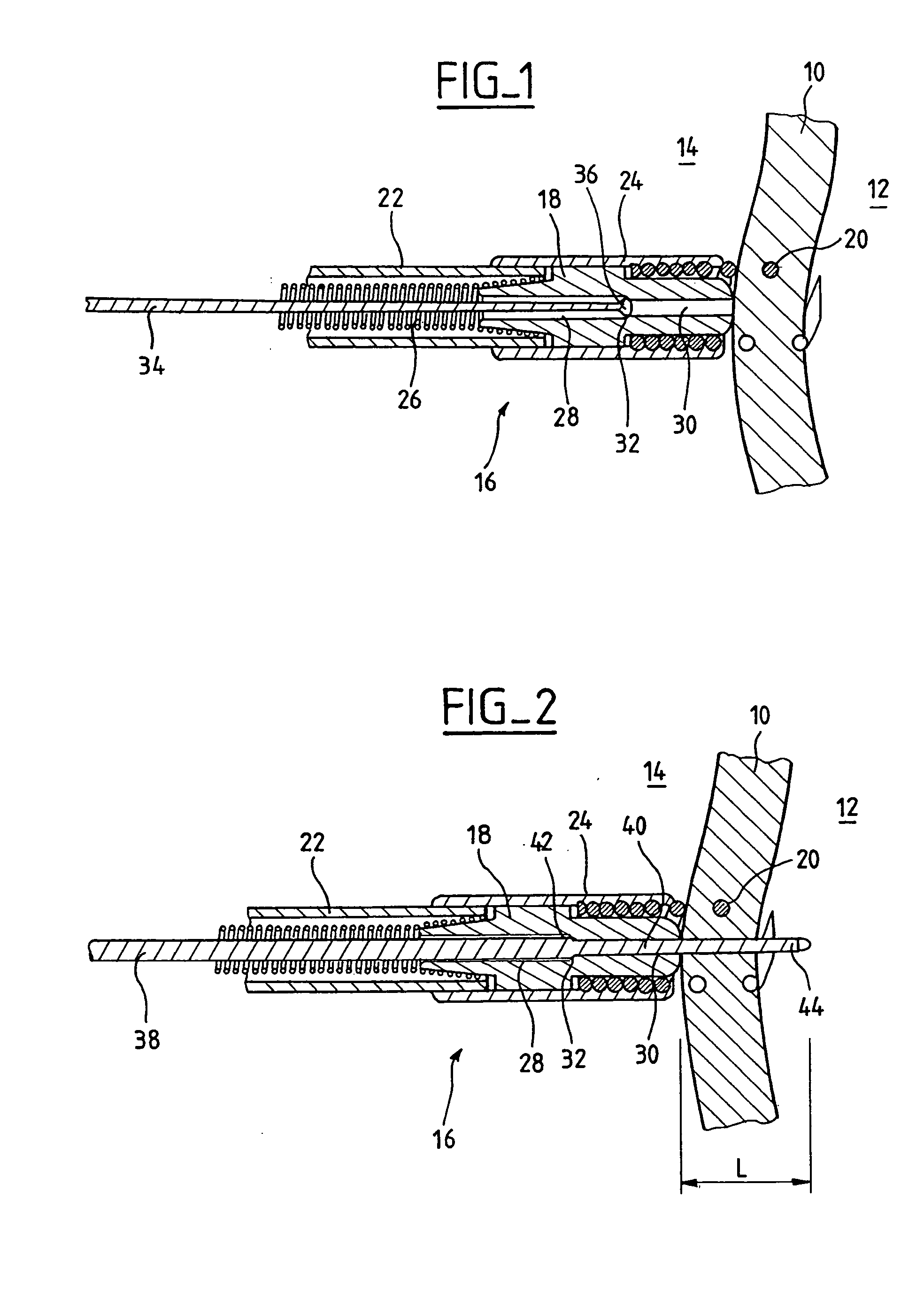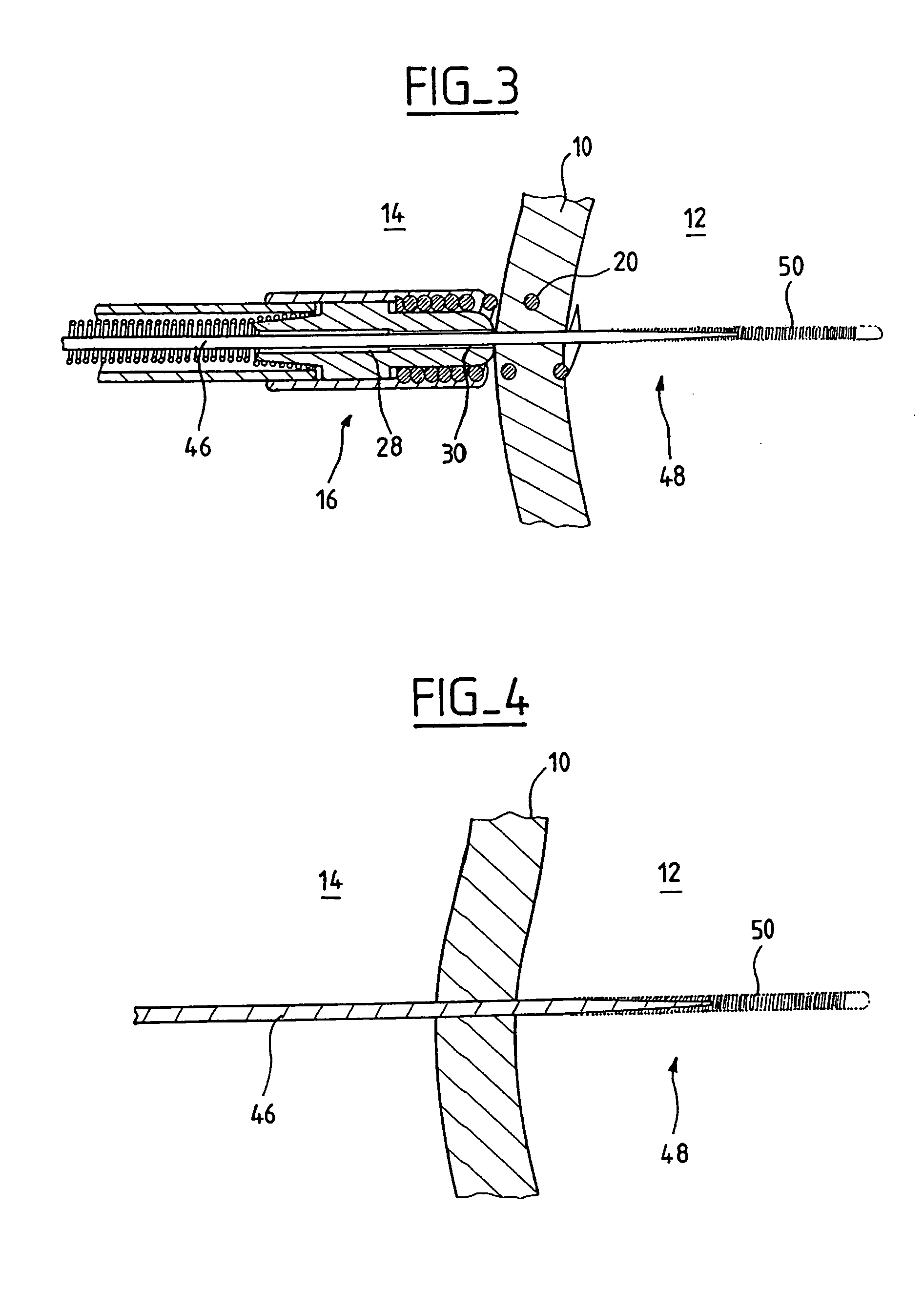Kit for penetrating the cardiac septum and for the placement of a trans-septal device, in particular a stimulation probe, in a left cardiac cavity
a technology of transseptal device and kit, which is applied in the field of stimulation probe, can solve the problems of high operational risk, difficult to implement technique, and inability to achieve implant technique, and achieve the effect of minimizing the invasive character of intervention
- Summary
- Abstract
- Description
- Claims
- Application Information
AI Technical Summary
Benefits of technology
Problems solved by technology
Method used
Image
Examples
Embodiment Construction
[0029] With reference to FIG. 1, reference 10 indicates the wall of the cardiac septum, for example, in the example described below, the wall separating cavity 12 of the left atrium to cavity 14 of the right atrium. It will be understood, however, that this description can be transposed in a similar way to the penetration of the cardiac septum separating the left ventricle from the right ventricle. Furhter, the description which follows discusses the invention in the context of an intervention concerning passing a stimulation probe through the interatrial wall so as to stimulate a left cavity (ventricle or atrium) by means of the probe. As explained above, this type of intervention is, however, not restrictive, and the kit of the invention also can be used for other types of interventions requiring the penetration of the cardiac septum, for example, the passage of a probe for the measurement of various physiological parameters from the interior of a left cavity, the introduction of ...
PUM
 Login to View More
Login to View More Abstract
Description
Claims
Application Information
 Login to View More
Login to View More - R&D
- Intellectual Property
- Life Sciences
- Materials
- Tech Scout
- Unparalleled Data Quality
- Higher Quality Content
- 60% Fewer Hallucinations
Browse by: Latest US Patents, China's latest patents, Technical Efficacy Thesaurus, Application Domain, Technology Topic, Popular Technical Reports.
© 2025 PatSnap. All rights reserved.Legal|Privacy policy|Modern Slavery Act Transparency Statement|Sitemap|About US| Contact US: help@patsnap.com



